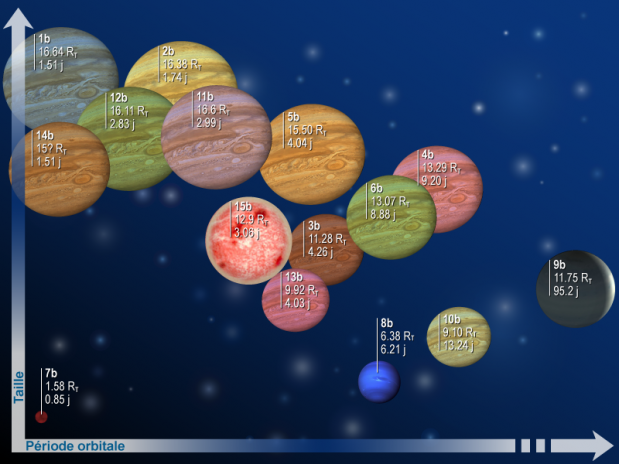Exoplanets of all sorts

Launched on 26 December 2006, CNES’s CoRoT space telescope has achieved a fine record after 5 years in orbit at 896 km above Earth. As of end November, it had detected 625 candidate exoplanets, 25 of which have been confirmed by ground telescopes. And that’s not all, since CoRoT has also discovered what is thought to be the first Earth-like planet outside the solar system: CoRoT-7b, confirmed in 2009.
It’s impossible to be sure for the moment, but this planet looks very promising and could also be accompanied by a second rocky planet 8 times more massive than Earth: CoRoT-7c. “CoRoT has really left its mark as the first space mission to hunt for transiting exoplanets,” says Olivier La Marle, astrophysics programmes coordinator at CNES. “It has returned a much richer set of data than we ever expected.”
Indeed, CoRoT has collected a diverse haul of exoplanets with diameters varying by as much as a factor of 10 and densities as much as a factor of 200.
Looking for extraterrestrial life

Besides hunting for exoplanets, CoRoT’s other mission to observe stellar vibrations has also proven a success: “The satellite has detected a comparable cycle of magnetic activity in a star other than our Sun but lasting 120 days rather than 11 years,” says Olivier La Marle enthusiastically. “It has also measured oscillations identical to the Sun’s in red giants, dying stars that expand to sizes equivalent to the Earth-Sun distance.”
CoRoT’s mission has been extended 3 years to 2013. The instrument and satellite are both working well and it still has plenty of fuel left. The U.S. Kepler space telescope recently discovered an exoplanet in the habitability zone of its star, 600 light-years from Earth. And ESA is planning to launch its very-wide-field Plato telescope around 2022.
One day, maybe one of these missions will discover an extraterrestrial life form.